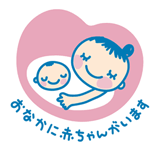Priority seating
Priority seating
Priority seat of love
-
Establishment of priority seating
-
Priority seating was initially introduced on March 6th, 1973 for disabled persons, senior citizens, and those with small children so that they may use buses and trams without concern.
-
Priority seating location
-
On buses, there are two priority seats (some buses have only one seat) just in front of the door at the middle.
On trams, there are two priority seats (one seat on each side).

-
Attention
-
Priority seating is for disabled persons, pregnant women, those with small children, and sick or injured persons.
In line with our policy that “All seats are priority seats,” and also to prevent accidents in the vehicles, we air announcements asking passengers to give priority seats located near the centre of the vehicle to elderly citizens or disabled persons.
We ask passengers for their cooperation in giving up the priority seats to those in need.
-
Priority seating (English description)
-
We also indicate the priority seats in English to let foreign citizens know about the seating and to ask for cooperation.
-
Maternity mark
-

A maternity mark is worn by pregnant women in order to make other passengers aware.
The early stage of pregnancy is the most important period not only for the baby’s growth but also for the mother’s health; however, by appearance, other passengers may find it difficult to tell if a woman is pregnant.
When you find women wearing this mark, please be so kind to offer your seat.
Back to top


